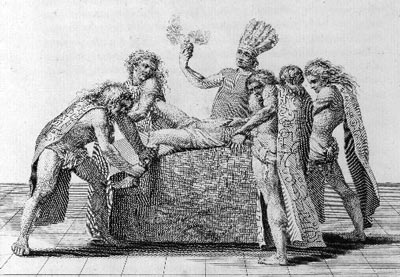An eloquent defense of euthanasia by organ removal
In a recent article in the journal Bioethics, two Oxford bioethicists provide a lucid defense of euthanasia by organ removal.

The notion of death by organ removal is sullied by its association with Aztec human sacrifices and the pleasant little English practice of hanging, drawing and quartering for treason. But the practice may make a come back, albeit in a more humane and respectable form.
In an influential article published in the journal Bioethics, Oxford bioethicists Julian Savulescu and Dominic Wilkinson present a rational defence of what they label ‘organ donation euthanasia’. The practice, as they describe in the article, involves the steady removal of a patients’ organs after they have been put under anaesthetic. “Death”, the authors write, “follows the removal of the heart”.
In contrast to previous precedents, the process is – in theory – relatively pain free. Patients are under a total anaesthetic while their vital organs are harvested. And furthermore, it would only take place with informed consent of the patient, which Guy Fawkes and William Wallace never gave.
Savulescu and Wilkinson offer a few other caveats. The procedure should only be performed on patients whose death is already imminent. And they suggest that it may be wise to explore other more palatable options first: “we do not claim that the alternatives discussed here are the only ways to address the organ shortfall.”
In the end, though, it may prove to be our only option to combating the organ shortage: “We have to decide whether it is worthwhile upholding the principles that currently govern organ transplantation, or whether the unmet needs of patients with organ failure warrant their revision or rejection.”
Community consent, the authors observe, may be an issue.
An eloquent defense of euthanasia by organ removal
Xavier Symons
https://www.bioedge.org/images/2008images/humorg23.jpg
Creative commons
dead donor rule
euthanasia
organ transplantation
- Can machines be moral? - March 7, 2021
- Can we synthesise Christianity moral theology with secular bioethics? - November 28, 2020
- Euthanasia polling data may fail to capture people’s considered views - August 15, 2020
